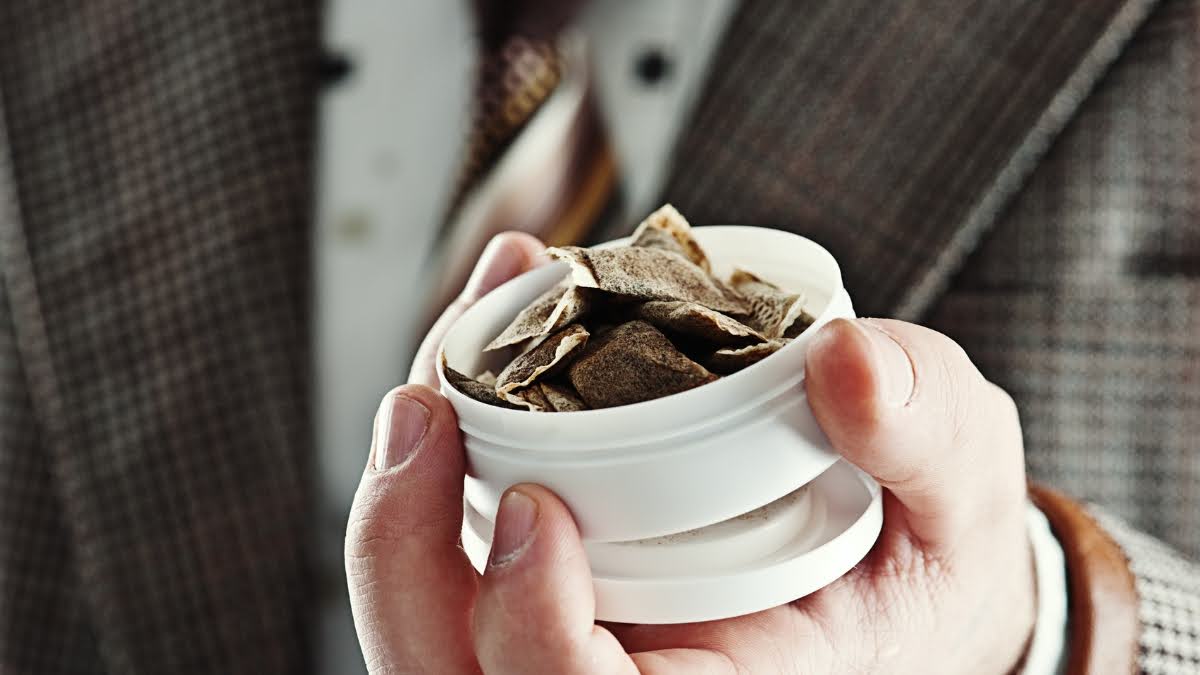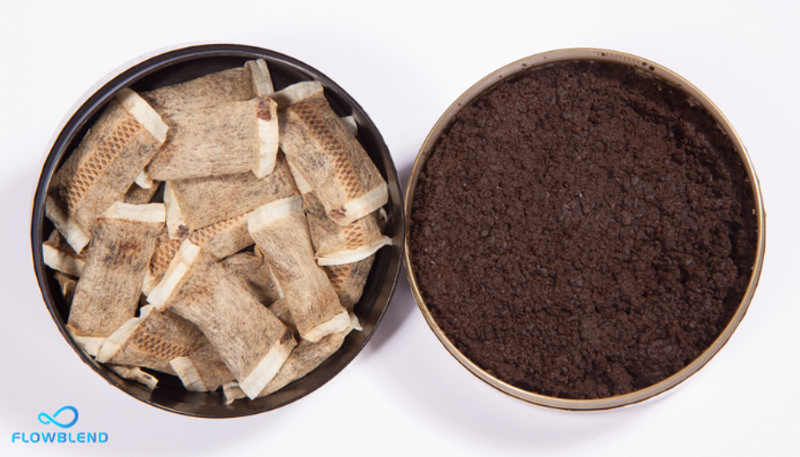In the world of vice and indulgence, few substances have left as deep a mark on society as tobacco. This piece explores the cultural, societal, and health aspects of tobacco use, while also shedding light on a unique product - CBD and Nootropic Pouches. Targeting a mainly male audience, we aim to provide comprehensive insights and establish topical authority on all things tobacco-related.
Unlock the power of nature and elevate your daily routine! Try FlowBlends' premium selection and discover the benefits of our specially-formulated CBD Pouches, recharge with the invigorating CBD Energy Pouches, or enhance your cognitive performance with our groundbreaking Nootropic Pouches. Don't wait – experience the FlowBlend difference today!
The Cultural And Societal Impacts Of Tobacco
Tobacco has deeply influenced societies around the world, from its ceremonial use in ancient indigenous cultures to its integration as a status symbol and social activity in modern times. The "Golden Leaf" brought wealth and economic growth, particularly in the American South, but also became a source of political and health-related controversies. Its portrayal in the media as glamorous in the 20th century sharply contrasts the increasing awareness of its health risks and the subsequent anti-smoking campaigns of recent decades.1
Unlock Your Path To A Healthier, Smoke-Free Life!Discover FlowBlend's CBD and Nootropic Pouches, your key to quitting nicotine:
Choose FlowBlend for a life aligned with your goals and purpose. Break free from nicotine and embrace a brighter, healthier future! |
Comparing Ingredients & Processing Methods: Dipping Tobacco Vs. Chewing Tobacco
Dipping tobacco and chewing tobacco are both smokeless forms of tobacco, but they differ in ingredients, preparation, and consumption. Dipping tobacco, often referred to as "snuff," is finely ground and comes moist. It's typically held between the gum and lower lip. Chewing tobacco, on the other hand, is available in loose leaf, plug, or twist forms, and users chew on it to release the nicotine.2 Both products undergo fermentation but vary in flavorings and additives. However, it's vital to note that both contain harmful chemicals and carcinogens.
Understanding The Top Health Risks Associated With Tobacco
Tobacco consumption remains a leading cause of preventable deaths globally. Whether smoked or used as smokeless tobacco, it contains numerous toxic and carcinogenic compounds. Smoking is directly linked to lung, throat, and mouth cancers, among others, and also increases risks for heart disease, stroke, and chronic obstructive pulmonary disease (COPD). Smokeless tobacco products, though sometimes perceived as safer, can still cause cancers of the mouth, esophagus, and pancreas.3
Popular Consumption Methods And Trends For Tobacco
Tobacco has been consumed in various forms over centuries – from traditional smoking pipes, cigars, and cigarettes to the more modern e-cigarettes and vaping devices. Recently, there's been a shift towards perceived "safer" alternatives like e-cigarettes, which heat liquid nicotine without combustion. However, these newer methods come with their own set of health concerns. Additionally, heated tobacco products and snus (a form of smokeless tobacco) have gained popularity in certain regions. Trends shift as the interplay of cultural, regulatory, and health factors evolve.4
What Is Dipping Tobacco?
Dipping tobacco, often referred to as "dip," is a type of smokeless tobacco product. It is made from finely ground or shredded tobacco leaves and is typically moistened. Users place a small amount of dip between their lower lip and gum, where it releases nicotine when it comes into contact with saliva.5
Key Points:
- Smokeless tobacco products.
- Contains finely ground or shredded tobacco.
- Placed between the lower lip and gum.
- Releases nicotine when in contact with saliva.

Why Is Understanding Dipping Tobacco Important?
Understanding dipping tobacco is essential for individuals, especially those considering its use, for several reasons:
It's a Health Concern
Dipping tobacco poses significant health risks, and being informed helps individuals make healthier choices.2
Legal Regulations
Understanding the legal regulations surrounding the sale and use of dipping tobacco is crucial to avoid legal complications.6
Personal Well-being
Knowing the potential impact on personal health and well-being allows individuals to make informed decisions about their habits.7
When Does Dipping Tobacco Become Harmful?
Dipping tobacco becomes harmful from the moment it is used. The harmful effects can manifest in various ways and may worsen with prolonged use.
Immediate Effects
- Nicotine absorption leading to addiction.
- Irritation and burning sensation in the mouth.
- Increased heart rate and blood pressure.
Long-term Effects
- Risk of oral cancer.
- Gum recession and tooth decay.
- Increased risk of cardiovascular issues.
- Negative impact on overall oral health.
Are There Benefits Of Dipping Tobacco?
While some people may perceive certain benefits to using dipping tobacco, it's important to note that the risks far outweigh any potential advantages. Some users believe it can provide a short-term energy boost or relaxation, but these perceived benefits come with severe health consequences.
Are There Any Impacts On Oral Health When Dipping Tobacco?
Yes, dipping tobacco has detrimental effects on oral health. Here are some of the key impacts:
- Oral Cancer: Dipping tobacco significantly increases the risk of oral cancer, including cancers of the mouth, tongue, and throat.7
- Gum Recession: The constant irritation caused by dip can lead to gum recession, exposing tooth roots and increasing the risk of tooth decay.8
- Tooth Decay: The sugar and abrasive nature of some dipping tobacco products can lead to tooth decay and cavities.6
- Bad Breath: Dipping tobacco can cause chronic bad breath, which can be socially uncomfortable.9

What Are The Health Implications Of Dipping Tobacco?
Dipping tobacco carries several health implications, which can affect both physical and mental well-being. Some of the most concerning health implications include:
- Nicotine Addiction: Dipping tobacco is highly addictive due to its nicotine content, leading to cravings and withdrawal symptoms.10
- Oral Cancer: The risk of oral cancer is significantly elevated among dip users, making it a life-threatening concern.7
- Oral Health Issues: Gum recession, tooth decay, and other oral health problems are common consequences of using dipping tobacco.9
- Cardiovascular Risks: Nicotine in dipping tobacco can lead to increased heart rate and blood pressure, potentially contributing to cardiovascular problems.11
What Is Chewing Tobacco?
Chewing tobacco, often referred to simply as "chew," is a smokeless tobacco product made from cured and fermented tobacco leaves. It is typically available in the form of loose leaves, plugs, or twists, and users place a portion of it inside their mouth, often between the cheek and gum. Chewing tobacco releases nicotine, a highly addictive substance, when it comes into contact with saliva.5
Understanding Chewing Tobacco
Understanding chewing tobacco is crucial for individuals who may consider using it or those who want to be informed about its risks and consequences. Knowledge about this tobacco product can help people make informed decisions regarding their health and lifestyle choices.
When Does Chewing Tobacco Become Harmful?
Chewing tobacco becomes harmful from the moment it is used. The harmful effects are immediate, as the body absorbs nicotine and other harmful chemicals. Over time, prolonged use of chewing tobacco significantly increases the risk of various health problems, including oral cancer, gum disease, and heart issues.12
Key Points:
- Harm begins with the first use due to nicotine absorption.
- Long-term use intensifies health risks.
Are There Benefits Of Chewing Tobacco?
Contrary to popular belief, there are no benefits associated with chewing tobacco use. While some users may experience short-term nicotine-related effects like increased alertness and reduced stress, these are outweighed by the severe health risks and consequences.
Key Points:
- No health benefits are associated with chewing tobacco.
- Short-term perceived benefits are overshadowed by long-term health hazards.
Are There Any Impacts On Oral Health When Chewing Tobacco?
Chewing tobacco has significant negative impacts on oral health. It can lead to a range of oral issues, including gum recession, tooth decay, and an increased risk of oral cancer. Understanding these consequences is essential for individuals concerned about their oral well-being.9
Key Points:
- Chewing tobacco is linked to oral health problems.
- Regular use can result in gum disease and tooth decay.
What Are The Health Implications Of Chewing Tobacco?
The health implications of chewing tobacco are profound and extend beyond oral health. Chewing tobacco use is associated with an increased risk of various cancers, cardiovascular diseases, and addiction to nicotine.7 It is crucial to be aware of these serious health consequences when considering or using chewing tobacco.
Key Points:
- Chewing tobacco is linked to cancer and heart diseases.
- Nicotine addiction is a potential outcome of its use.
Final Thoughts
Our comprehensive analysis of tobacco, its cultural effects, and its many forms highlighted the complicated issues surrounding this long-lasting addiction. Furthermore, We have explored the mechanics, advantages, and disadvantages of dipping and chewing tobacco in detail. In addition to this, we also provided insights into alternative options that encourage healthier choices.
But why stop at alternatives when there's an innovative, nicotine-reduction solution that aligns seamlessly with this discourse? Introducing our CBD and Nootropic Pouches, designed to help users break free from nicotine addiction. These pouches offer a promising path towards a smokeless, healthier lifestyle.
Experience wellness like never before with FlowBlend. For holistic relaxation, try our CBD Pouches. Need a boost? Our CBD Energy Pouches are your go-to. And for those seeking mental clarity, our Nootropic Pouches are a game changer. Explore now and redefine your wellbeing journey!
Frequently Asked Questions About Tobacco
What are the most common forms of tobacco?
- Cigarettes: The classic tobacco product, widely smoked worldwide.
- Cigars: Known for their rich flavors and luxury appeal.
- Pipe Tobacco: Often enjoyed by connoisseurs for its nuanced tastes.
- Smokeless Tobacco: Includes snuff, chewing tobacco, and snus.
Is smokeless tobacco a safer alternative to smoking?
Smokeless tobacco is not safe; it carries its own health risks, including oral cancer and gum disease.
How does tobacco use affect non-smokers?
Secondhand smoke can harm non-smokers, increasing their risk of health problems.
Can tobacco be used in moderation without health risks?
Even moderate tobacco use carries health risks. It's best to avoid tobacco altogether.
Are there any benefits to quitting tobacco?
Yes, quitting tobacco can lead to improved health, increased life expectancy, and financial savings.
Can tobacco use be effectively treated and managed?
Yes, there are various resources and programs available to help individuals quit tobacco.
How has tobacco advertising evolved over the years?
Tobacco advertising has faced increased regulation to discourage use, especially among young people.
What is the future of the tobacco industry?
The tobacco industry is adapting to changing consumer preferences, with a focus on reduced-risk products.
Sources:
- Tobacco Free Life. (2016). History of Tobacco in the World — Tobacco Timeline. Tobacco-Free Life. https://tobaccofreelife.org/tobacco/tobacco-histo...
- National Cancer Institute. (2010, October 25). Smokeless Tobacco and Cancer. National Cancer Institute; Cancer.gov. https://www.cancer.gov/about-cancer/causes-preven...
- World Health organization. (2022, May 24). Tobacco. Who.int; World Health Organization: WHO. https://www.who.int/news-room/fact-sheets/detail/...
- American Lung Association. (2021). Overall Tobacco Trends | American Lung Association. Www.lung.org; American Lung Association. https://www.lung.org/research/trends-in-lung-dise...
- Products, C. for T. (2020). Smokeless Tobacco Products, Including Dip, Snuff, Snus, and Chewing Tobacco. FDA. https://www.fda.gov/tobacco-products/products-ing...
- World Health Organization. (2019). item. Who.int. https://www.who.int/publications/i/item/978924151...
- Health Risks of Smokeless Tobacco. American Cancer Society. (n.d.). https://www.cancer.org/cancer/risk-prevention/tob...
- CDCTobaccoFree. (2021, July 16). Smokeless Tobacco: Health Effects. Centers for Disease Control and Prevention. https://www.cdc.gov/tobacco/data_statistics/fact_...
- Tobacco Use and Cessation. (n.d.). Www.ada.org. https://www.ada.org/en/resources/research/science...
- National Center for Chronic Disease Prevention and Health Promotion (US) Office on Smoking and Health. (2016). E-Cigarette Use Among Youth and Young Adults. Nih.gov; Centers for Disease Control and Prevention (US). https://www.ncbi.nlm.nih.gov/books/NBK538680/
- National Institute on Drug Abuse. (2021). Cigarettes and Other Tobacco Products DrugFacts. National Institute on Drug Abuse; National Institutes of Health. https://nida.nih.gov/publications/drugfacts/cigar...
- CDC. (2019, April 24). Centers for Disease Control and Prevention. Centers for Disease Control and Prevention. https://www.cdc.gov/index.htm

